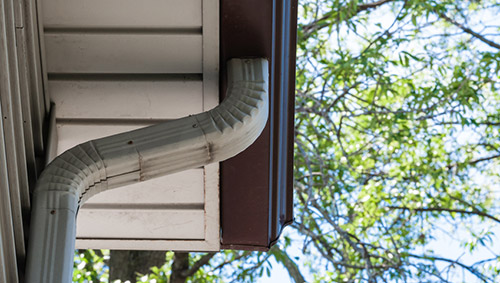
 Roofing eaves do an important job in keeping water away from wall and window systems. The rise of modernism in architectural design has started a fashion where these are omitted to achieve a cleaner line on the outside of the building. However, eaves perform a vital role in protecting the home from moisture.
Roofing eaves do an important job in keeping water away from wall and window systems. The rise of modernism in architectural design has started a fashion where these are omitted to achieve a cleaner line on the outside of the building. However, eaves perform a vital role in protecting the home from moisture.
Eaves don’t just protect the home from ice, rain and snow. Passive house and green building designs also utilize overhangs to effectively block out summer sun and allow winter sunshine into the home, thereby reducing heating and cooling costs.
Installing eaves and gutters means you can ensure that moisture is directed away from the house and gutters allow you to collect rainwater for use in the garden and home. Directing water away from your basement and foundation will ensure the longevity of your building and reduce the likelihood of water damage, mold and mildew.
When eaves are not installed correctly or are absent from a house design, the house is exposed to weather phenomenon which may result in early siding rot and moisture in the walls and windows, especially where these are not properly installed and properly maintained.
Eaves also prevent splash back which is a major contributor to siding rot, mold and mildew that forms in basements and near the bottom edge of the home. Mud can also be an issue with splash back and eaves will help to prevent this.
The ideal width of the eave will depend on your roof design and the pitch of your roof. It will also depend on the amount of rain and snow your climate zone is exposed to so ask your design professional for advice.
